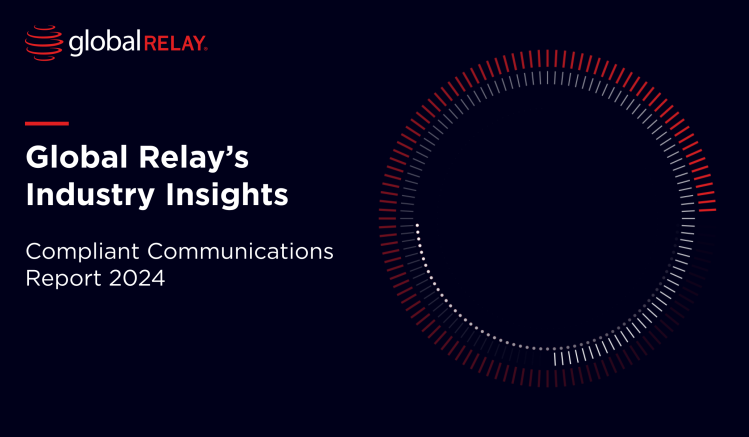The Commodity Futures Trading Commission (CFTC) has seemingly adopted an “if you can’t beat them, join them” sentiment, expressed in Commissioner Christy Goldsmith Romero’s opening remarks at The North American Securities Administrators Association’s Annual Meeting. Romero’s speech proposed that regulators should utilize the technologies that have often been subject to regulatory scrutiny to augment investor protection and optimize processes within the finance industry.
Federal regulators like the CFTC and the Securities and Exchange Commission (SEC) have long advised that present-day technologies like social media, artificial intelligence (AI), and cryptocurrencies are applications that pose potential risks to the financial industry. Thus, an abundance of rules and regulations exist to combat these risks and keep financial institutions compliant.
While this point still holds, Goldsmith Romero’s statement suggests that the CFTC is willing to move toward utilizing these platforms as a tool to strengthen financial safety. It is impossible to “beat” these technological advances, so the next best move is to “join them” by adopting these systems and mastering their functions to support the regulatory mission to maintain orderly markets. She states:
“If government does not keep pace with technology, it is often the most vulnerable who will suffer.”
With these technologies becoming a central aspect of daily life in both a personal and professional sense, they are a chief focus for regulators. Goldsmith Romero emphasized the criticality of understanding these advancements and their implications. Technology experts from the CFTC’s Technology Advisory Committee have helped create direction around using crypto to conduct Know Your Customer and anti-money laundering processes through digital technology use, for instance.
SEC Chair Gary Gensler recently gave a speech on AI’s risk and influence within the financial industry. While he acknowledged the advantages of innovation, he also encouraged vigilance in handling AI-related business practices to abide by federal regulations and uphold market health.
Goldsmith Romero seemed to share similar thoughts on strictly utilizing “responsible AI”: AI that is auditable, explainable, and unbiased. She implies that there are still guidelines to be made on this emerging tool, so regulators must keep a close eye on the way investors implement this technology.
Tech turned to advantage
Goldsmith Romero’s speech goes on to explain how regulators can employ technologies, such as social media, to their advantage. In the past, investigations around financial industry news were not nearly as straightforward as they are today. Previously, it was necessary to do some digging to uncover the complete picture, but now finding details about recent enforcement actions or movement in the market is as simple as checking social media feeds.
It has become much more common for people to refer to social platforms for news and information. A 2021 report from Pew Research found that about half of Americans get news from social media.
Further, Goldsmith Romero states that law enforcement officials in other industries use digital information to their advantage and urges financial regulators to do the same, saying:
“From an enforcement and broader regulatory standpoint, civil regulators should use all the tools available in a digital age. Tracing funds, tracing crypto, using the blockchain, using link analysis, using social media, and data analytic tools should all be in a regulators’ tool kit. The ability to find connections between people has gotten tremendously easier, faster, and more reliable.”
Social media and AI tools can aid in investigations, as regulators can analyze profiles and posts to identify correlations or information related to illicit activity, such as insider trading. Any statements on social platforms can become evidence of intent, hence the tight guidelines around financial organizations’ use of these channels as detailed in the SEC’s Marketing Rule and Regulation Federal Disclosure (Regulation FD).
In light of these points, financial institutions should take a page out of regulators’ books and focus on monitoring social platforms to conform with industry standards and remain watchful of suspicious practices within their organization. Archiving and retaining all communications on social media platforms preserves compliance and is a proactive practice expected of institutions, especially as off-channel communication becomes an emerging issue.
Goldsmith Romero’s statement went on to underscore the power social media has in influencing the financial market and investor decisions, using meme stocks as an example. One of the original meme stocks, GameStop, caused a tidal wave of influence around the stock’s price in the market in a matter of weeks. Clearly, social media’s ability to govern the industry is staggering, and is a factor that regulators note in understanding technology’s capacities in finance.
One stop fraud shop
In addition, Goldsmith Romero proposed creating a fraud database, which she calls the National Financial Fraud Registry. This would provide a comprehensive search mechanism to investors and individuals, who can use it to quickly learn about fraud convictions and fines federal regulators have issued against institutions.
This database can deter cybercriminals because of its ease of accessibility, allowing people to find a complete account of information in one location. This would be an alternative to only having media coverage of fraud activities, which requires research to uncover and lacks efficiency.
Innovations of today are here to stay
Reflecting on Goldsmith Romero’s remarks, it’s wise to assume that prominent technological platform utilization will only grow in the finance sector. She said in summary:
“It’s time for a new approach to protect investors. One where regulators keep pace with technology, put the latest technological advances in our tool belt, and arm investors with readily accessible information that can prevent them from becoming victims.”
If regulators move to draw on the benefits of these advancements in the same way financial institutions are, it’s wise to assume that guidelines and audits around applications will grow. Thus, employing policies and investing in solutions to monitor and archive data is in every organizations’ best interest.
It’s vital to follow in the footsteps of federal regulators like the CFTC when utilizing modern technologies by understanding their effects and how to capitalize on them, while ensuring proper recordkeeping to remain compliant and ahead of the curve. It might be difficult to predict what the next transformative technology will be, but you can prepare for it by using present day technology to the fullest.




